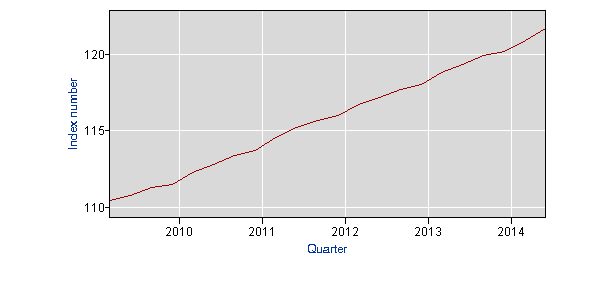July 31, 2014
The release of new data from the Employment Cost Index (ECI) has the inflation hawks really excited. It showed that compensation rose by 0.7 percent in the months from March to June. This is a sharp uptick from the 0.3 percent rate in the months from December to March. This could be just what is needed to force the Fed to raise interest rates to slow the economy and keep people from getting jobs. That’s pretty exciting stuff.
Before we start designating people to give up their jobs in the war against inflation, it’s worth looking at the data a bit more closely. The 0.3 percent ECI growth reported for the winter months was actually unusually low. It had been rising at a 0.5 percent quarterly rate (2.0 percent annual rate) for the last four years. Fans of arithmetic can average together the 0.3 percent measure from the first quarter with the 0.7 percent measure from the second quarter and get (drum roll, please) ……. 0.5 percent.
In other words, the 0.7 percent rise in the ECI kept exactly on the growth track we have been for the last four years. It is not evidence of an uptick in the rate of wage growth (which would be good news).
Employment Cost Index

Source: Bureau of Labor Statistics.
Addendum:
Since there are people who see the rise in the second quarter ECI as a serious inflation threat, a few more data points may be helpful. The rise in the ECI for state and local employees was unchanged at 0.5 percent in both the first and second quarters. On the private side, the wage index went from a rise of 0.2 percent in the first quarter to 0.8 percent in the second quarter. The benefits index rose 0.3 percent in the first quarter, compared with 1.1 percent in the second quarter.
This leaves us with two possible explanations. The first is that the rate of increase in wages and benefits in the private sector slowed sharply in the first quarter and then accelerated even more sharply in the second quarter. Alternatively, the ECI under-reported wage and benefit growth in the first quarter. This means that if the trend growth was unchanged, we would find the sharp uptick in wage and benefit growth reported in the second quarter data.
When we look at a finer cut of the data it certainly seems consistent with the second story. For example, the increase in compensation for management, business, and financial occupations was 0.0 percent in the first quarter. It was 1.2 percent in the 2nd quarter. The increase in compensation for health care and social assistance industries was -0.3 percent in the first quarter. It was 0.6 percent in the second quarter. Does anyone believe that the world really looks like this?







Comments